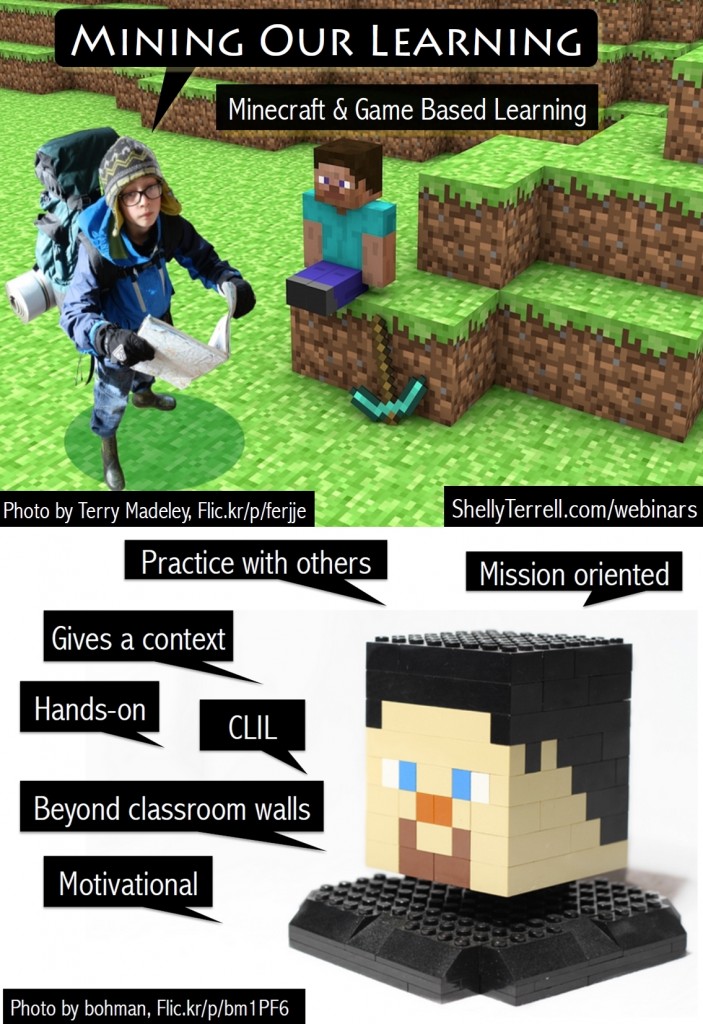Minecraft, a virtual sandbox game where players can explore, build, and engage with a vast digital world, has gained popularity as an innovative tool in education. For TESOL (Teaching English to Speakers of Other Languages) teachers, it provides a unique and versatile platform to enhance language learning by immersing students in an interactive environment where they can practice English naturally. The open-ended nature of Minecraft, where players roam freely and choose their approach to various objectives, allows educators to craft lessons that are both engaging and educational, transforming language acquisition into a fun and meaningful experience.
Minecraft’s potential as a teaching tool lies in its ability to create immersive scenarios that require students to use English for problem-solving, communication, and collaboration. For TESOL teachers, integrating Minecraft into the curriculum means developing activities that align with language learning goals, such as expanding vocabulary, practicing conversational skills, or improving writing abilities. For instance, a simple language-based challenge could involve building a structure following specific instructions in English or describing the process and materials used. This helps students learn vocabulary in context while engaging with the language in a real-world simulation.
Teachers can use Minecraft to design quests and adventures that stimulate language use in a range of scenarios. Students might embark on a treasure hunt where they follow written clues to different locations in the virtual world, interact with non-playable characters (NPCs) for additional hints, and solve puzzles to reach the final goal. This not only encourages reading comprehension but also prompts students to engage in discussions, ask questions, and share their strategies, thus practicing speaking and listening skills in English. These activities can be tailored to fit various proficiency levels, ensuring that the tasks are appropriately challenging and support progressive language development.
The collaborative nature of Minecraft also makes it an excellent tool for promoting teamwork and social learning in the TESOL classroom. Teachers can create group projects where students work together to complete an objective, such as building a replica of a famous landmark, setting up a virtual farm, or planning and executing a survival strategy. These projects often require negotiation, planning, and delegation, providing ample opportunities for students to use English to communicate their ideas, listen to others, and give constructive feedback. By practicing language skills within the context of teamwork, students learn to apply English in social interactions, which is crucial for real-life communication.
Furthermore, Minecraft’s built-in features allow for language-rich environments that stimulate curiosity and exploration. Teachers can create custom worlds with signs, books, and interactive objects that provide instructions or narrative elements, challenging students to read and comprehend English content to progress in the game. Additionally, players can be encouraged to write journals, create travel guides, or produce video logs about their experiences in the virtual world. These writing tasks reinforce language skills by requiring students to reflect on their adventures, explain their actions, and express their opinions using newly acquired vocabulary and grammar structures.
Implementing Minecraft as a learning tool requires some planning, but it can be made accessible for teachers with basic technical skills. Numerous online resources and communities are available to assist TESOL educators in designing Minecraft-based lessons and projects. Teachers can start small, using pre-existing educational maps or mods, and gradually incorporate more complex activities as they become more comfortable with the platform. Additionally, employing a blended learning approach, where in-class activities complement virtual tasks, can help bridge the gap between digital learning and traditional classroom methods.
Minecraft offers TESOL teachers an opportunity to bring language learning to life in an interactive and enjoyable way. It shifts the focus from rote memorization to active, experience-based learning, where students practice English in authentic scenarios. The game’s adaptability allows it to be used for a wide range of language learning objectives, making it a valuable addition to the modern TESOL classroom. By embracing Minecraft, teachers can empower students to learn English while exploring a virtual world, solving problems, and collaborating with others—all skills that are crucial not only for language mastery but for lifelong learning.



